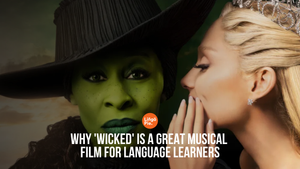In a world that grows increasingly interconnected, global perspectives and multilingualism have become essential skills for fostering understanding and communication across cultures.
One artist who exemplifies this bridging of languages and cultures is Manu Chao. With his diverse musical styles and multilingual lyrics, Manu Chao has made a significant contribution to language learning.
In this blog post, we will explore how Manu Chao's songs serve as a valuable resource for language learners to immerse themselves in global perspectives and enhance their multilingual skills.
By delving into his captivating melodies and thought-provoking lyrics, language learners can embark on a transformative journey that transcends boundaries and celebrates cultural diversity.

Table of Contents
- Introducing Manu Chao
- Manu Chao: A Musical Journey Across Latin America and Beyond
- Manu Chao Songs: Global Perspectives and Multilingualism
- How to Learn Languages with Manu Chao
- FAQs About Language Learning With Music
- Summing Up: Language Learning with Manu Chao's Songs
Introducing Manu Chao

Manu Chao is a highly influential artist known for his captivating music that blends various musical genres and languages. Born to Spanish parents, Chao began his musical career as part of the band Mano Negra before starting the band Radio Bemba Sound System and eventually pursuing a successful solo career.
Singing in Spanish, French, and other languages, Manu Chao's songs touch upon a range of themes, including social justice, globalization, and cultural diversity.
With a distinct blend of reggae, punk, rock, and Latin American rhythms, his music resonates with audiences worldwide. Chao's lyrics often convey powerful messages, addressing political and societal issues while promoting unity, love, and hope in an ever-changing world.
Manu Chao is a great pick if you are interested in language learning through music. This is the methodology promoted by Lingopie Music, the streaming service for language learning through music for learners of all levels.
Manu Chao: A Musical Journey Across Latin America and Beyond
Manu Chao's musical journey has been deeply influenced by the vibrant cultures and rhythms of Latin America. Born to Spanish parents, his South and Central American roots played a pivotal role in shaping his unique musical style.
Drawing inspiration from the rich musical heritage of countries like Mexico and Argentina, Chao seamlessly fuses genres such as reggae, ska, punk, and Latin rhythms, creating a captivating sound that transcends borders. This allows his listeners to gain perspectives on various global cultures and communities.
One of the key elements that sets Manu Chao apart is his ability to promote cultural diversity and global understanding through his music. By incorporating multiple languages and drawing from various musical traditions, he breaks down barriers and connects with audiences from diverse backgrounds.
Manu Chao Songs: Global Perspectives and Multilingualism
Chao's songs are a celebration of cultural exchange, offering a platform for different perspectives and fostering a sense of unity among listeners.
His ability to embrace different cultures and convey messages of social consciousness through his music makes him a true advocate for global perspectives and cultural awareness.
Listen to multilingual artist Manu Chao to gain important insight into the experiences of different communities in South America.
Bongo Bong
"Bongo Bong" is a prime example of Manu Chao's fusion of sounds and languages. This popular song combines elements of reggae and Latin rhythms with lyrics in both English and Spanish.
It showcases his ability to seamlessly blend musical styles and languages, creating a truly international sound that resonates with audiences worldwide.
While this song does not have a profound message, its joyous rhythm and sounds of South and Central America foster a positive energy and inspire a feeling of elation.
Clandestino
A notable Manu Chao song with a strong social and political message is "Clandestino." Released in 1998 as the title track of his album, "Clandestino" addresses the experiences of undocumented immigrants and the struggles they face.
The song sheds light on the harsh realities and injustices faced by those living in the shadows, highlighting the theme of migration and the quest for a better life. Through its poignant lyrics and impassioned vocals, "Clandestino" serves as a powerful anthem of solidarity, urging listeners to empathize with the plight of marginalized individuals and advocating for social justice.
The song's compelling message and infectious rhythm have made it one of Manu Chao's most iconic and impactful compositions.
Mala Vida
This is a popular song by Mano Negra, the band fronted by Manu Chao before his solo career. Released in 1988, the song addresses societal issues and critiques the hardships faced by marginalized communities.
The song delves into the struggles of individuals living in disadvantaged circumstances, portraying the harshness of their daily lives. It reflects on the challenging socio-economic conditions and social injustices prevalent in certain communities.
How to Learn Languages with Manu Chao

Music, in general, is a fantastic tool for language learning. It engages multiple senses and helps imprint vocabulary, pronunciation, and grammar structures in a memorable way. Manu Chao's songs, with their catchy melodies and thought-provoking lyrics, take this language-learning experience to another level.
You can learn languages with Manu Chao by first choosing which language to focus on, then listening and practicing with the language regularly, and finally exploring the messages behind the music.
Choose a Language
From Spanish and French to English and even other languages like Portuguese and Italian, Chao's songs offer a diverse linguistic landscape for language learners. It's a great idea to narrow down your language learning goals to one language, to begin with. This will provide a focus for your learning through music.
Manu Chao has a French-only album called "Sibérie m'était contée," while his album "La Radiolina" is predominantly in Spanish, with a couple of tracks in Italian, French, and Brazilian Portuguese.
By immersing yourself in his music, you can expose yourself to different languages, language structures, vocabulary, and cultural nuances, broadening your understanding and appreciation of diverse linguistic expressions.
Listen and Practice Regularly
To effectively learn languages with Manu Chao, create a playlist of his songs and listen to them regularly. Pay close attention to the lyrics, follow along with the translations, and analyze the vocabulary and grammar structures used.
Singing along can also improve your pronunciation and rhythm in the target language. As you familiarize yourself with the official audio of the songs, you can begin to mimic his accents and tone to perfect your speaking skills.
Whenever possible, try to engage with real-life conversations in your target language as well. Note useful vocabulary from Manu Chao's songs and incorporate these new words into your conversations. You can discuss his music on online forums or through language exchange platforms.
Explore the Messages Behind the Music
Finally, you can delve deeper by studying the themes and messages conveyed in his songs. Explore the social and political issues addressed, research cultural references, and discuss them with fellow language learners.
Engaging with the content on a deeper level not only enhances language skills but also fosters cultural understanding and global perspectives. By watching the official video of a song, you can often gain valuable insights into the meaning behind the music and the culture that it reflects.
Related:



FAQs About Language Learning with Music
Let's look at some frequently asked questions related to language learning with music and Manu Chao specifically.
What languages does Manu Chao sing in?
Manu Chao sings in a variety of languages including Spanish, French, English, and occasionally Portuguese and Italian. His multilingual repertoire adds to the richness and diversity of his music, leading him to enjoy international success and offering language learners a chance to explore different linguistic landscapes through his songs.
Where is "Me Gustas Tu" from?
"Me Gustas Tu" is a popular song by Manu Chao from his album "Próxima Estación: Esperanza" released in 2001. The song gained international success and became one of Manu Chao's signature tracks. With its catchy melody and lyrics in Spanish, "Me Gustas Tu" has resonated with audiences around the world.
Where can I find foreign language music?
You can find foreign language music in various places. Online music platforms like Lingopie Music and YouTube offer a wide selection of songs from musicians around the world. Additionally, exploring local music stores, cultural festivals, and international radio stations can also provide access to foreign-language music.
Can I learn a language through immersion in music?
Yes, immersion in music is a powerful tool for language learning. By regularly listening to and engaging with songs in your target language, you can improve vocabulary, pronunciation, and cultural understanding. Music immerses you in the language's rhythm, melodies, and expressions, enhancing your overall language-learning experience.

Summing Up: Language Learning with Manu Chao's Songs
As you can see, Manu Chao and his discography are a treasure trove of language learning potential. From his multilingual albums to the various global perspectives addressed in his lyrics, Chao is one of the most diverse and influential artists that language learners could ask for.
Incorporating Manu Chao's music into your language learning routine offers a dynamic and engaging way to improve your language skills while immersing yourself in the beauty of global cultures. Embrace the power of music and embark on a language-learning journey that transcends borders with Manu Chao as your musical guide.
Head over to Lingopie Music for more awesome music from Spain, France, and around the world.







![7 Best Spanish Music Festivals Worth Participating In [2025]](/blog/content/images/size/w300/2025/05/spanish-music-festivals.jpg)


